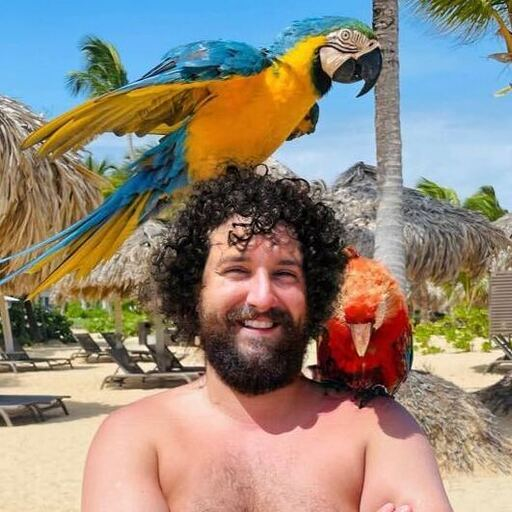Intro
Fish hatcheries serve a range of customers—from pond owners and recreational anglers to government agencies, conservation groups, and commercial fisheries. Whether you're selling fingerlings, stocking services, or partnering with wildlife departments, your hatchery needs to be easy to find online.
That’s where SEO (Search Engine Optimization) comes in. A strong SEO strategy ensures your hatchery ranks high in search results when potential customers are searching for phrases like “stock fish for pond near me” or “buy tilapia fingerlings [state].” With the right approach, you can drive more targeted traffic to your site, increase orders, and expand your reach in the aquaculture industry.
Why SEO Matters for Fish Hatcheries
Most people start their search for fish stocking or hatchery services on Google. Whether it’s a homeowner looking to stock a pond or a lake management company needing a bulk order of catfish, your business needs to show up when it counts.
SEO helps your hatchery:
-
Rank for high-intent searches like “bass fingerlings for sale” or “fish hatchery near me”
-
Attract local customers and regional contracts
-
Promote specialty offerings like ornamental koi, trout, or aquaponics fish
-
Build authority and trust through educational content
-
Increase direct inquiries, online orders, or quote requests
Keyword Research That Targets Your Ideal Buyers
Every customer—from hobbyist pond owners to state agencies—searches differently. Your SEO keywords should reflect the language your audience uses when looking for your services.
High-impact keyword examples:
-
fish hatchery near me
-
pond fish stocking [city/state]
-
buy fingerling fish online
-
trout hatchery in [region]
-
tilapia fingerlings for aquaponics
-
largemouth bass for pond stocking
-
koi hatchery [city]
-
fish farm wholesale suppliers
Use a tool like Ranktracker’s Keyword Finder to uncover high-converting, low-competition terms that align with your products and locations.
On-Page SEO That Sells Your Expertise and Fish Stock
Once visitors land on your website, your content should clearly explain your services, species available, and ordering process. Strong on-page SEO ensures your content ranks and converts.
What to include:
-
Keyword-rich headings (H1, H2, H3) such as “Stock Your Pond with Bluegill Fingerlings in [City]”
-
Individual pages for each species (e.g., catfish, trout, bass, tilapia, koi)
-
Product availability, pricing, and minimum order info
-
Delivery radius, pickup instructions, or stocking services
-
CTAs like “Request a Quote,” “Order Fish,” or “Check Availability”
-
Testimonials, success stories, or photos from past projects
-
Licensing, certifications, or conservation affiliations
Also include a FAQ section covering topics like shipping, seasonal availability, and fish acclimation.
Local SEO to Dominate Your Region
Most hatchery sales are regional, and your local visibility can directly impact how many orders you receive. Local SEO ensures you rank when someone nearby searches for fish stocking or hatchery services.
Local SEO tactics:
-
Create and optimize a Google Business Profile with accurate NAP (Name, Address, Phone), business categories, photos, and services
-
Use city, county, and state names throughout your site
-
Embed Google Maps and list your service areas or delivery zones
-
Get listed in local farm, aquaculture, or conservation directories
-
Collect Google reviews from clients, fisheries professionals, or contractors
If you deliver to multiple regions, create individual landing pages for each area you serve.
Content Marketing That Builds Authority
Blogging and educational content help attract organic traffic and build credibility with serious buyers and partners.
Blog content ideas:
-
“How to Choose the Right Fish for Your Pond”
-
“When’s the Best Time to Stock Your Pond?”
-
“Bass vs. Bluegill: What’s Better for Your Ecosystem?”
-
“Stocking Rates for Healthy Fish Growth”
-
“What Makes a Hatchery-Raised Fish Different?”
-
“5 Signs Your Pond Is Ready for Restocking”
This content answers common questions while targeting long-tail keywords that increase your traffic over time.
Visual SEO to Showcase Quality and Facilities
Visual content helps customers trust the quality of your fish stock and hatchery operations. It also boosts engagement and improves search visibility.
Visual SEO best practices:
-
Use high-resolution images of tanks, ponds, fish species, transport setups, and staff
-
Add alt text like “channel catfish fingerlings in oxygenated transport bag”
-
Use descriptive file names like “koi-fish-hatchery-delivery-truck.jpg”
-
Embed short videos showing harvest days, fish grading, or stocking in action
Photos and video walk-throughs make your business feel transparent and professional—especially to customers ordering in bulk or sight-unseen.
Backlink Building to Strengthen Domain Authority
Links from trusted sources tell Google that your hatchery is credible and worth ranking. They also expose your farm to new audiences in your niche.
Backlink ideas:
-
Get featured in aquaculture directories and fish farm listings
-
Submit your hatchery to state or regional conservation program directories
-
Collaborate with pond management companies, fisheries biologists, or ag organizations
-
Write guest content for outdoor, aquaponics, or sustainable farming blogs
-
Get listed on local chamber of commerce or agriculture department sites
Use Ranktracker’s Backlink Checker to identify your link profile and target areas for outreach.
Measure Performance and Optimize Continuously
SEO is an ongoing process—consistent tracking and refinement are what separate high-performing websites from stagnant ones.
Use Ranktracker to:
-
Monitor rankings for “fish hatchery near me” and species-specific keywords
-
Audit your site for speed, mobile usability, and on-page issues
-
Track which product or blog pages generate the most visits or quote requests
-
Identify seasonal search trends for species like trout (cold water) or tilapia (warm water)
Regular adjustments based on data can help you scale and stay ahead of competitors.
Final Thoughts
Fish hatchery SEO puts your business on the map—literally and figuratively. Whether you’re selling sportfish, stocking ponds, supplying aquaponics systems, or working with conservation partners, SEO ensures you’re visible when it matters.
By focusing on local search, product pages, species-specific content, and educational material, your hatchery can increase sales, build trust, and lead the way in sustainable aquaculture.

